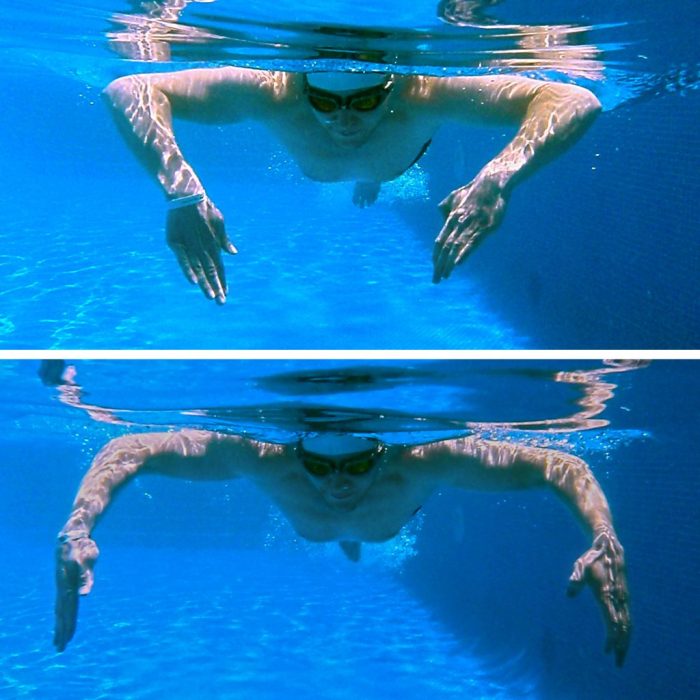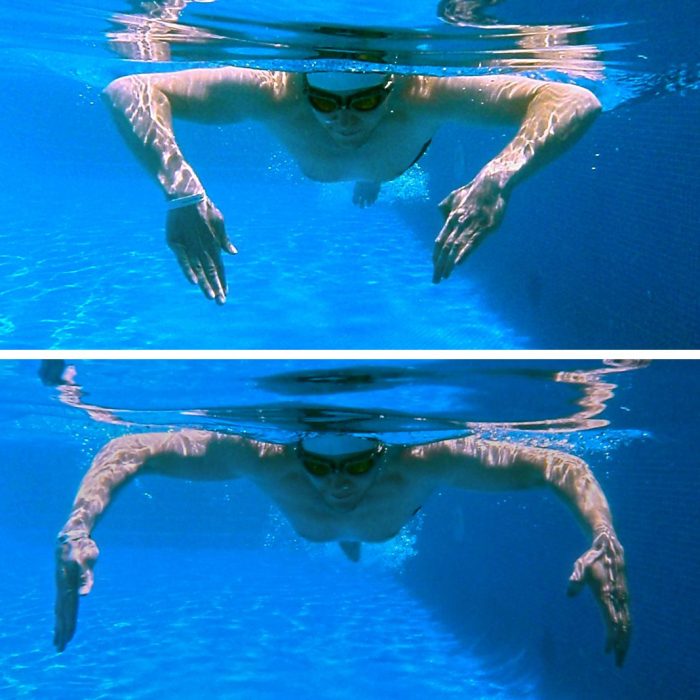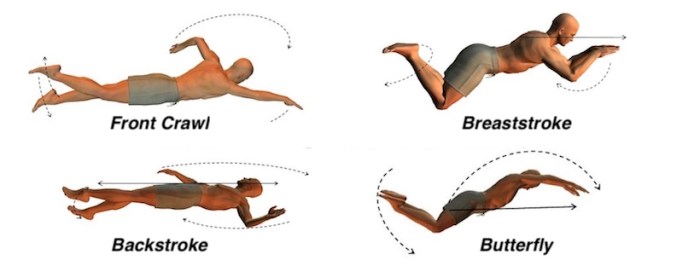What does S14 mean in swimming? This seemingly simple question opens a window into the fascinating world of Paralympic swimming, where athletes with disabilities compete at the highest levels. The S14 classification, a vital part of the Paralympic movement, ensures fair competition by categorizing swimmers based on their specific impairments.
This classification system, which takes into account both physical and mental disabilities, allows athletes to compete against others with similar limitations, fostering inclusivity and showcasing the incredible athleticism of these remarkable individuals.
S14 swimmers face unique challenges and possess extraordinary abilities. Their journey to the pool often involves overcoming significant obstacles, demonstrating unwavering determination and resilience. From understanding the intricacies of the classification system to appreciating the unique swimming techniques employed by S14 athletes, this exploration delves into the world of Paralympic swimming, highlighting the profound impact of the S14 classification on the sport.
S14 in Swimming

S14 is a classification used in swimming for athletes with disabilities. This classification system, established by the International Paralympic Committee (IPC), categorizes athletes based on their functional limitations, allowing for fair competition and ensuring that athletes with similar abilities compete against each other.
In swimming, S14 refers to a classification for athletes with intellectual impairments. This classification system allows for fair competition, ensuring that athletes with similar abilities compete against each other. While this topic might seem unrelated to the highly anticipated black myth wukong xbox release date , both demonstrate the importance of clear and defined categories for competition and engagement.
Just as the S14 classification ensures fairness in swimming, the release date for Black Myth: Wukong will bring clarity and excitement for gamers eager to experience this anticipated title.
The Classification System in Swimming
The IPC Swimming Classification system is a complex process that involves assessing athletes’ functional limitations and their impact on their ability to perform in swimming. The system utilizes a numerical scale ranging from S1 to S14, with S1 representing the most significant functional limitations and S14 representing the least.
Rationale for Categorizing Swimmers with Disabilities
Categorizing swimmers based on disability is essential for ensuring fair competition. It allows athletes with different functional limitations to compete on a level playing field, ensuring that the competition is based on skill and ability rather than the severity of their disability.
The classification system helps to:
- Promote fairness and equity: By grouping athletes with similar functional limitations, the classification system ensures that all athletes have an equal opportunity to compete and succeed.
- Prevent unfair advantages: Athletes with more significant functional limitations may have an advantage in certain events if they compete against athletes with fewer limitations. The classification system mitigates this by ensuring that athletes with similar abilities compete against each other.
- Encourage participation: By creating a structured and fair system, the classification system encourages athletes with disabilities to participate in swimming, knowing that they will be competing against others with similar abilities.
Understanding S14 Classification
The S14 classification in swimming is a category for athletes with intellectual impairments. It’s crucial to understand the criteria that define this category to appreciate the challenges and achievements of these athletes.
S14 Classification Criteria
The S14 classification is determined by the International Paralympic Committee (IPC) and focuses on the severity and impact of the athlete’s intellectual impairment on their swimming performance. The assessment process involves a thorough evaluation of the athlete’s cognitive abilities, including their ability to understand and execute instructions, their problem-solving skills, and their ability to adapt to changing situations.
Examples of Disabilities That Fall Under S14 Classification, What does s14 mean in swimming
The S14 classification encompasses a range of intellectual impairments, including:
- Down syndrome
- Fragile X syndrome
- Autism spectrum disorder
- Cerebral palsy
- Williams syndrome
- Prader-Willi syndrome
It’s important to note that not all individuals with these disabilities will automatically qualify for the S14 classification. The IPC assesses each athlete individually based on the specific impact of their impairment on their swimming ability.
S14 Swimmers: What Does S14 Mean In Swimming

S14 swimmers are individuals with intellectual impairments, classified by the International Paralympic Committee (IPC) as having an IQ of 70 or less. They are a diverse group with a wide range of abilities and challenges, demonstrating the complexity of the S14 classification.
Strengths and Challenges of S14 Swimmers
S14 swimmers possess unique strengths and face distinct challenges due to their intellectual impairments. Their strengths often lie in their ability to focus intensely, maintain high levels of motivation, and exhibit exceptional physical endurance. However, they may encounter difficulties in understanding complex strategies, adapting to changing conditions, and managing their emotions during competition.
Comparison of Swimming Techniques
While S14 swimmers share the fundamental principles of swimming with able-bodied athletes, their techniques can be adapted to accommodate their individual needs and strengths. For instance, some S14 swimmers may utilize a more powerful kick due to their heightened leg strength, while others might focus on maintaining a streamlined body position to minimize drag.
Physical and Mental Adaptations
S14 swimmers require specific physical and mental adaptations to excel in their sport. Physical adaptations might involve strengthening core muscles to improve stability and balance, while mental adaptations could include developing coping mechanisms for anxiety and learning to manage their emotions during competition.
Notable S14 Swimmers

The S14 classification in swimming recognizes athletes with intellectual impairments. While the classification is relatively new, several outstanding swimmers have already made their mark on the world stage. These athletes demonstrate exceptional talent, resilience, and a dedication to the sport.
Prominent S14 Swimmers
Here’s a table showcasing some of the most notable S14 swimmers, highlighting their achievements and notable events:
| Name | Nationality | Achievements | Notable Events |
|---|---|---|---|
| Toni Shaw | Great Britain | Multiple Paralympic gold medalist, World Championship gold medalist, European Championship gold medalist | 2020 Tokyo Paralympics, 2019 World Para Swimming Championships, 2018 European Para Swimming Championships |
| Rebecca Redfern | Great Britain | Paralympic gold medalist, World Championship gold medalist, European Championship gold medalist | 2020 Tokyo Paralympics, 2019 World Para Swimming Championships, 2018 European Para Swimming Championships |
| Louis Lawlor | Great Britain | Paralympic silver medalist, World Championship silver medalist, European Championship gold medalist | 2020 Tokyo Paralympics, 2019 World Para Swimming Championships, 2018 European Para Swimming Championships |
| Jordan Catchpole | Great Britain | Paralympic bronze medalist, World Championship bronze medalist, European Championship gold medalist | 2020 Tokyo Paralympics, 2019 World Para Swimming Championships, 2018 European Para Swimming Championships |
| Matthew Levy | Australia | Paralympic silver medalist, World Championship silver medalist, European Championship bronze medalist | 2020 Tokyo Paralympics, 2019 World Para Swimming Championships, 2018 European Para Swimming Championships |
| Elise Marks | Australia | Paralympic bronze medalist, World Championship bronze medalist, European Championship silver medalist | 2020 Tokyo Paralympics, 2019 World Para Swimming Championships, 2018 European Para Swimming Championships |
Impact of S14 Classification on Swimming
The S14 classification in swimming has had a profound impact on the sport, not only in terms of competition but also in promoting inclusivity and accessibility for athletes with intellectual impairments. This classification has enabled athletes with intellectual disabilities to compete on a level playing field, fostering a sense of belonging and achievement within the swimming community.
Impact on the Evolution of Swimming
The S14 classification has contributed to the evolution of swimming by:
- Increased Participation:The inclusion of S14 swimmers has led to a significant increase in participation in competitive swimming, as athletes with intellectual impairments now have a dedicated category to compete in.
- Enhanced Visibility:S14 swimmers have gained increased visibility and recognition, raising awareness about the abilities and achievements of athletes with intellectual disabilities.
- Improved Training and Support:The development of specific training programs and support systems tailored to the needs of S14 swimmers has enhanced their performance and overall well-being.
Role in Promoting Inclusivity and Accessibility
S14 swimmers play a vital role in promoting inclusivity and accessibility in sports by:
- Breaking Down Barriers:Their participation challenges societal perceptions and stereotypes surrounding intellectual disabilities, demonstrating that athletes with these impairments can excel in sports.
- Creating a Welcoming Environment:The presence of S14 swimmers in the swimming community creates a more inclusive and welcoming environment for athletes of all abilities.
- Inspiring Others:S14 swimmers serve as role models for other athletes with disabilities, inspiring them to pursue their athletic dreams.
Perspectives of S14 Swimmers
S14 swimmers have shared their perspectives on the benefits and challenges of their classification:
- Benefits:
- Opportunity to compete on a level playing field.
- Sense of belonging and acceptance within the swimming community.
- Increased visibility and recognition for their achievements.
- Challenges:
- Addressing misconceptions and stereotypes surrounding intellectual disabilities.
- Ensuring adequate training and support systems are available.
- Balancing the demands of swimming with other aspects of their lives.